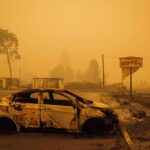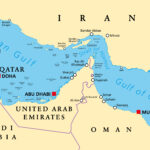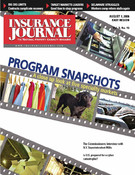While franchises and large company mergers have changed the landscape of businesses across the United States, the “Mom and Pop” structure of most dry cleaning facilities continues to be successful. With approximately 30,000 drycleaners in the United States, dry cleaning is one of the largest industry sectors still recognized as a “Mom and Pop” small business, according to the International Fabric Care Institute (IFI), Association for Professional Drycleaners. Although the sizes of drycleaners vary, most commercial drycleaners remain a single facility, family-owned operation and a fruitful market for insurance professionals targeting this niche business.
Very stable
“This is a very stable and competitive market with very few surprises,” said Keith Camacho, vice president of Broker Relations and Sales for Irving Weber and Associates Inc. in New York, a managing general agency that markets to independent agents nationwide as well as directly to dry cleaning facilities.
The dry cleaning industry provides garment cleaning, finishing and related services and much of their success or failure is gauged on the business’ service and proximity to its customer base. Commercial dry cleaning generates median annual revenues below $250,000, according to IFI.
Weber and Associates, which has been in business for 60 years, writes an all-inclusive “Fabricare Program” that includes pollution liability and workers’ compensation and all property coverages. Weber writes the “Mom and Pop” facilities as well as large plants that handle restaurant, hospital and hotel linen cleaning.
Despite the move to more casual attire in the workplace in the last 10 years, dry cleaners still remain as busy as ever. “The market rates have remained relatively steady,” says John J. Matternas, chairman of Intercorp Inc., a national insurer that writes an environmental pollution liability policy program for dry cleaning businesses.
Pollution concerns
Limits on the type of coverage vary depending on the size and needs of the client. No limit is too high, Weber’s Camacho said, especially when writing environmental liability.
“We find that more and more states and municipalities–as well as lenders, property managers, and landlords–are scrutinizing the environmental impact of dry cleaners,” Matternas said.
Intercorp Inc. developed its pollution insurance program for dry cleaners back in the mid-1990s, when dry cleaners were faced with high minimum premiums for environmental coverage. According to Matternas, this program features comprehensive environmental inspection of each facility by a national environmental consulting firm.
In addition, all programs are open to independent insurance agents, Matternas said, but the company also offers the program directly to insureds where they act as the agent.
The issue of the environmental impact of this industry is an ongoing one according to Camacho. Laws regarding the use of perchloroethylene (perc) vary from state to state, some stricter than others. “Many of our clients use alternative solvents and we continue to monitor the laws of each state on perc for the benefit our policyholders,” Camacho said.
Traditional dry cleaners use solvents and other detergents to clean clothes. The solvent used by over 90 percent of the industry is perchloroethylene (perc). Others use petroleum and new technologies such as wet cleaning that have made tremendous strides in the market. The dry cleaning industry took a lead incorporating pollution prevention mechanisms and environmental management systems in their operations to reduce solvent emissions and exposures, according to the IFI.
Other coverages available for dry cleaners include property coverages for the building, business, personal property and coverage for the personal property of others known as “Bailee.” Bailee claims involve the loss of garments or linen as a result of fire, water damage, loss, or theft.

Was this article valuable?
Here are more articles you may enjoy.


 Worsening Weather Igniting $25 Billion Weather Derivatives Market
Worsening Weather Igniting $25 Billion Weather Derivatives Market  The Top 15 U.S. Metros with High Exposure to Wildfire Risk
The Top 15 U.S. Metros with High Exposure to Wildfire Risk  Everton FC Buyer Accused of Fraud, Double-Pledging Assets in Lawsuit
Everton FC Buyer Accused of Fraud, Double-Pledging Assets in Lawsuit  Three Insurers Reject Chevron’s $57 Million Claim for Iran Oil Seizure
Three Insurers Reject Chevron’s $57 Million Claim for Iran Oil Seizure 


